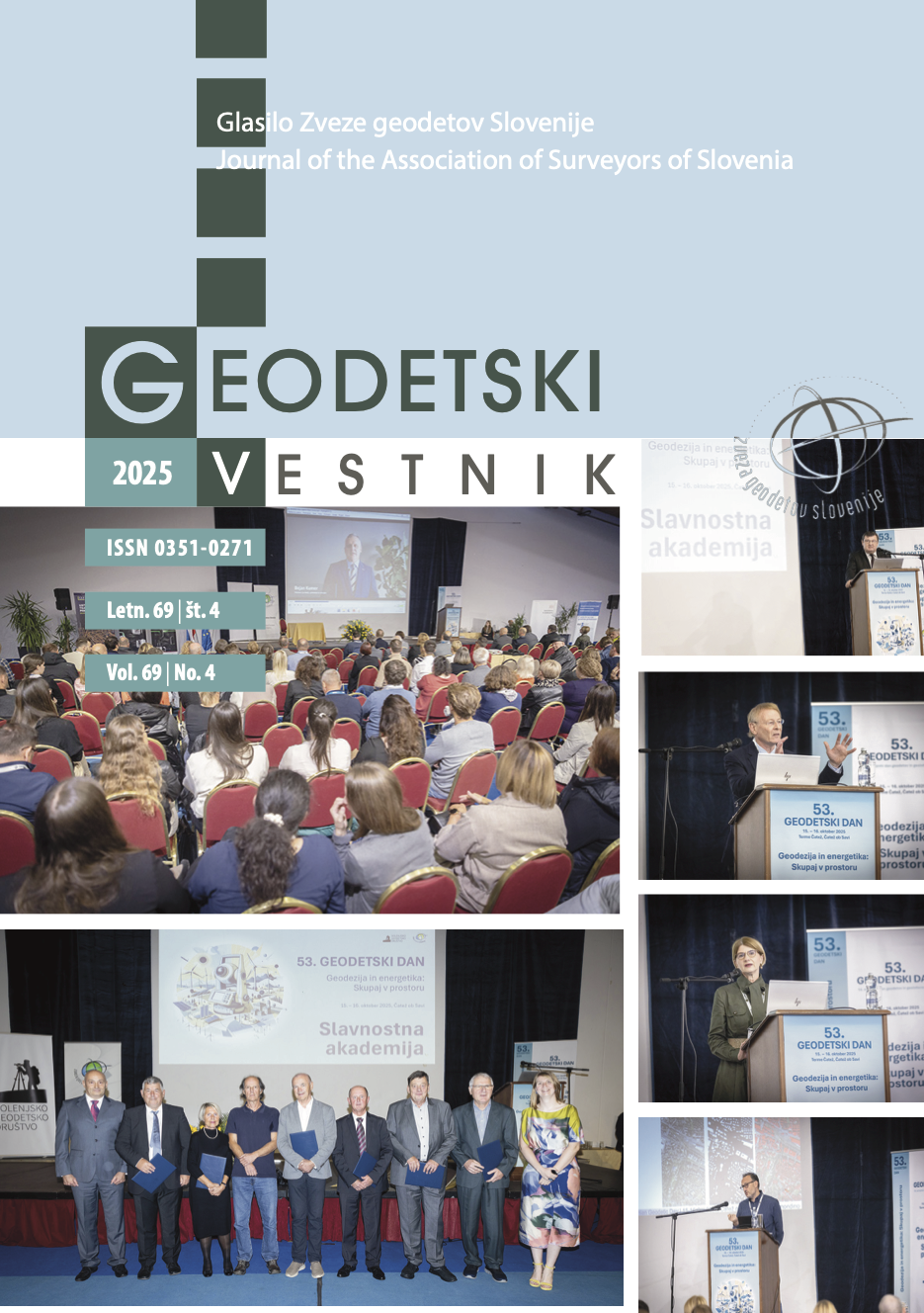
IF JCR (2023): 0.4
IF SNIP (2023): 0.487

Association of Surveyors of Slovenia
Zemljemerska ulica 12, SI-1000 Ljubljana
E-mail: info@geodetski-vestnik.com

Paper
Back to issue 64/2
Globalna analiza atmosferskih refrakcijskih profilov iz prekrivanj radijskih signalov cosmic gps
Global analysis of atmospheric refractivity profiles from COSMIC GPS radio occultation soundings
Author(s):
Shaoqi Gong, Cunjie Zhang, Geshi Tang, Yehui Zhang, Jing Han
Abstract:
Atmospheric refractivity is a function of temperature, pressure and water vapor. The refractivity retrieved from the Global Navigation Satellite Systems (GNSS) radio occultation soundings has fine vertical resolution and high accuracy, so it can be used to improve the accuracy of numerical weather prediction models and in climate and meteorological research. This study evaluates differences of refractivity from the Constellation Observing System for Meteorology, Ionosphere, and Climate (COSMIC) against radiosondes (RS) at different atmospheric levels, latitudes and seasons. Then temporal and global spatial distribution patterns of the COSMIC refractivity are analyzed at the atmospheric levels of 925 and 300 hPa (about 0.78 and 9.33 km). The results indicate that the COSMIC and RS refractivities are in generally good agreement. The differences between COSMIC and RS refractivity decrease with increasing height in the troposphere above 300 hPa, and the differences are very small above the tropopause. The COSMIC-RS differences exhibit distinct latitudinal and seasonal variation. At levels above 400 hPa, the differences are largest at low latitudes, intermediate at middle latitudes and lowest at high latitudes. The differences decrease from summer to winter in the whole troposphere. The global COSMIC refractivity at 925 hPa is the highest in the tropics, and it decreases with increasing latitude in the NH and SH. However, the refractivity at the atmospheric levels of 300 hPa is just the opposite. Refractivity anomalies relative to the annual mean values in January and July are significant, whereas the differences are not as large in the transitional seasons of April and October.
Keywords:
atmospheric refractivity, COSMIC, GPS radio occultation, radiosonde, temporal and spatial distribution
DOI: 10.15292/geodetski-vestnik.2020.02.227-240
Citation:
Shaoqi Gong, Cunjie Zhang, Geshi Tang, Yehui Zhang, Jing Han (2020). Globalna analiza atmosferskih refrakcijskih profilov iz prekrivanj radijskih signalov cosmic gps. | Global analysis of atmospheric refractivity profiles from COSMIC GPS radio occultation soundings. Geodetski vestnik, 64 (2), 227-240. DOI: 10.15292/geodetski-vestnik.2020.02.227-240

Association of Surveyors of Slovenia
Zemljemerska ulica 12, SI-1000 Ljubljana
E-mail: info@geodetski-vestnik.com

